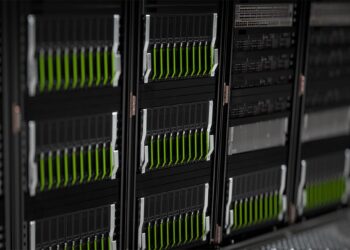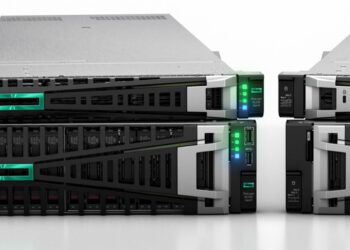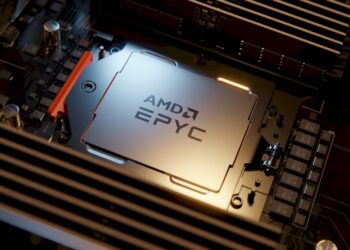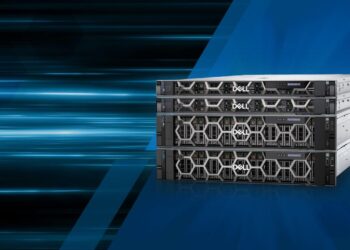In the dynamic and highly competitive world of enterprise technology, very few companies boast the enduring legacy and consistent ability to reinvent themselves as IBM. While once synonymous with mainframe computing, IBM has successfully navigated decades of technological shifts, demonstrating a remarkable capacity for adaptation. The narrative of an IBM server resurgence isn’t about recapturing past glories in every segment, but rather a strategic re-emergence as a critical player in high-value, mission-critical, and emerging technology domains. This resurgence is driven by IBM’s unique strengths in hybrid cloud, artificial intelligence (AI), and quantum computing, all underpinned by its powerful and specialized server platforms.
The Evolving Landscape of Enterprise Computing
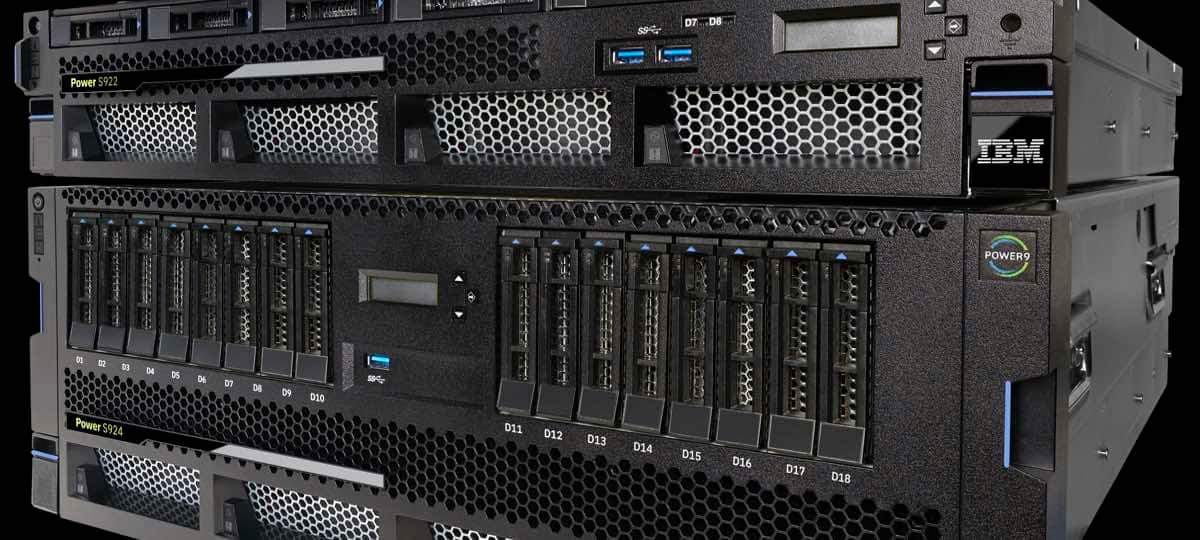
For many years, the conversation around servers largely revolved around commodity x86 hardware, driven by scale-out architectures and virtualization. However, as organizations grapple with unprecedented data volumes, the complexities of hybrid cloud environments, and the compute demands of AI and advanced analytics, the need for specialized, high-performance, and incredibly reliable server infrastructure has become paramount. This shift has created a fertile ground for IBM’s unique server offerings to shine once again.
IBM’s strategic focus on solutions that tackle the most demanding enterprise workloads – from massive transactional databases and secure mainframe operations to bleeding-edge AI inferencing and quantum research – sets it apart. This isn’t a resurgence driven by volume in the broad server market, but by a targeted, high-impact approach in areas where IBM’s deep expertise and specialized hardware truly make a difference. The story of IBM’s server resurgence is about providing the foundational technology for an intelligent, interconnected, and increasingly data-driven world.
Pillars of IBM’s Server Re-Emergence
IBM’s renewed prominence in the server landscape is built upon several strategic pillars, showcasing its unique value proposition in the modern enterprise.
A. IBM Z Servers
The IBM Z mainframe has been the bedrock of global commerce for decades, and it remains a cornerstone of IBM’s server strategy, demonstrating continuous innovation. Far from being a legacy system, the modern IBM Z is a highly sophisticated, secure, and resilient platform essential for mission-critical workloads.
- Transaction Processing Powerhouse: IBM Z servers are unrivaled in their ability to process massive volumes of transactions per second with extreme reliability, making them indispensable for banking, finance, airlines, and government sectors. They handle petabytes of data with unparalleled I/O capabilities.
- Industry-Leading Security: Security is paramount on IBM Z. Features like Pervasive Encryption encrypt all data at rest and in flight without application changes, protecting data from unauthorized access even in the event of a breach. Confidential Computing capabilities ensure data remains encrypted even while being processed in memory. The system’s Secure Service Container technology provides tamper-resistant execution environments.
- Resilience and Uptime: IBM Z systems are designed for continuous availability, with features like redundant components, live software updates, and advanced disaster recovery capabilities. Their uptime statistics are virtually unmatched in the industry.
- AI Inferencing Integration: Modern IBM Z systems integrate dedicated AI acceleration capabilities, allowing for real-time AI inferencing directly on transactional data as it’s processed, eliminating the need to move sensitive data off the mainframe for AI analysis.
- Open and Hybrid Cloud Integration: Despite its reputation as a closed system, IBM Z is increasingly open, supporting Linux and integrating seamlessly into hybrid cloud environments through APIs and connectivity tools, allowing mainframe applications to participate in broader enterprise ecosystems.
B. IBM Power Servers
The IBM Power architecture represents IBM’s core server offering for distributed, AI, and Big Data workloads. It stands as a powerful alternative to x86 platforms, particularly for demanding applications.
- AI and Machine Learning Acceleration: Power servers are highly optimized for AI workloads, often integrating closely with NVIDIA GPUs. IBM’s PowerAI software stack provides optimized libraries and frameworks for deep learning. The NVLink technology (a high-speed interconnect developed by NVIDIA, tightly integrated with Power CPUs) enables significantly faster data transfer between CPUs and GPUs, crucial for accelerating AI model training.
- Data-Intensive Workloads: With high core counts, large memory capacities, and superior I/O bandwidth, Power servers excel at running data-intensive applications like large databases (e.g., Oracle, DB2), in-memory databases (e.g., SAP HANA), and analytics platforms.
- Virtualization and Cloud Capabilities: PowerVM, IBM’s virtualization technology for Power servers, offers robust virtualization capabilities, allowing for efficient resource utilization and flexible deployment of virtual machines. Power servers are also central to IBM’s hybrid cloud strategy, supporting Red Hat OpenShift and other cloud-native technologies.
- Enterprise-Grade Linux: IBM has heavily invested in making Power a premier platform for Linux workloads, particularly for enterprise Linux distributions like Red Hat Enterprise Linux and SUSE Linux Enterprise Server.
- Reliability and Performance: Power servers are known for their enterprise-grade reliability and consistent performance under heavy, continuous workloads, often outperforming x86 alternatives for specific data-centric tasks.
C. IBM Quantum Servers
IBM is a clear leader in the burgeoning field of quantum computing, with its IBM Quantum initiative at the forefront of developing and deploying quantum servers.
- Accessible Quantum Hardware: IBM was one of the first to provide cloud access to real quantum computers, allowing researchers and developers worldwide to experiment with quantum algorithms and build prototypes.
- Continuous Qubit Scaling: IBM has a roadmap for scaling up its quantum processors, consistently announcing new milestones in qubit count and quantum volume (a measure of overall quantum computer performance). This includes processors like “Eagle,” “Osprey,” and “Condor.”
- Quantum Cloud Platform: The IBM Quantum platform provides a full stack of tools, from the open-source Qiskit SDK for programming quantum computers to cloud access to a growing fleet of quantum processors.
- Hybrid Quantum-Classical Computing: IBM’s vision for quantum computing involves a hybrid approach, where classical supercomputers work in conjunction with quantum processors to solve complex problems, with quantum servers accelerating specific, quantum-advantaged parts of the computation.
- Research and Ecosystem Building: IBM is heavily invested in fundamental quantum research and in building a vibrant quantum ecosystem of developers, partners, and academic institutions, fostering the development of quantum algorithms and applications.
D. Hybrid Cloud Integration: Seamless Across Environments
IBM’s overarching strategy revolves around hybrid cloud, and its server platforms are foundational to this vision.
- Red Hat OpenShift: IBM’s acquisition of Red Hat and its OpenShift container platform is central to its hybrid cloud strategy. IBM Z and Power servers are optimized to run OpenShift, enabling consistent deployment and management of containerized applications across on-premises, edge, and public cloud environments.
- Cloud Paks: IBM Cloud Paks, built on OpenShift, offer integrated software solutions (for AI, data, automation, security, etc.) that can run consistently across IBM’s servers and any cloud, providing a unified platform for enterprise applications.
- API Management and Integration: IBM servers are designed for seamless integration into broader IT ecosystems through robust APIs, allowing for orchestration and management from central hybrid cloud control planes.
- Workload Placement Flexibility: IBM’s strategy empowers customers to strategically place workloads on the most suitable server platform – IBM Z for ultimate security and transaction integrity, Power for AI and data-intensive workloads, or commodity x86 for general-purpose tasks – all managed within a consistent hybrid cloud framework.
E. Security and Resilience by Design
Security and resilience have always been hallmarks of IBM servers, particularly the mainframe. This commitment extends across its entire server portfolio.
- Hardware-Accelerated Security: Many IBM servers include hardware-level security features, such as cryptographic co-processors and secure boot mechanisms, to protect against tampering and ensure the integrity of the computing environment.
- Firmware and Microcode Integrity: Rigorous controls are in place to ensure the authenticity and integrity of server firmware and microcode updates, protecting against malicious injections.
- Pervasive Encryption: As seen in IBM Z, the ability to encrypt data at rest, in flight, and even in use is a unique security advantage across IBM’s platforms.
- High Availability and Disaster Recovery: IBM servers are designed with redundancy, fault tolerance, and advanced recovery capabilities to ensure maximum uptime for mission-critical applications.
- Compliance and Audit Readiness: IBM servers come with built-in features and robust auditing capabilities that help organizations meet stringent regulatory compliance requirements (e.g., GDPR, HIPAA, PCI DSS).
F. AI and Analytics Acceleration
IBM’s vision for “AI Everywhere” is deeply embedded in its server strategy.
- Integrated AI Capabilities: From dedicated AI accelerators on IBM Z to tight GPU integration on Power servers, IBM is designing its hardware to directly accelerate AI workloads.
- AI Software Stack: Complementing its hardware, IBM provides optimized software stacks (e.g., PowerAI, Watson services) that simplify the development and deployment of AI models on its servers.
- Data-Centric AI: IBM’s server strategy emphasizes bringing AI to the data, whether it’s on the mainframe for transactional insights or on Power systems for large-scale data analytics, reducing data movement and improving efficiency.
- Trusted AI: IBM is also focusing on building “trusted AI” solutions on its platforms, addressing concerns around AI bias, explainability, and governance.
IBM’s Strategic Market Approach

Beyond technical specifications, IBM’s unique market position and strategic initiatives underpin its server resurgence.
G. Industry-Specific Solutions
IBM leverages its deep industry expertise to tailor server solutions that address the specific challenges and regulatory requirements of different sectors.
- Financial Services: IBM Z remains critical for banks and financial institutions due to its unparalleled transaction processing capabilities, security, and reliability.
- Healthcare: Power servers are used for genomics research, clinical analytics, and secure patient data management.
- Government: For highly secure and resilient operations, government agencies often rely on IBM Z and Power systems.
- Manufacturing: Power systems support complex enterprise resource planning (ERP) systems and optimize manufacturing processes.
H. Consulting and Services Arm
IBM’s extensive Global Business Services division provides critical support for customers adopting its server solutions. This includes planning, implementation, migration, and ongoing management, ensuring successful deployment and optimization. This integrated approach from hardware to services is a major differentiator.
I. Research and Development Investment
IBM continues to invest heavily in fundamental research, not just in quantum computing but also in next-generation chip architectures, AI hardware, and cooling technologies. This long-term vision ensures IBM remains at the cutting edge of server innovation.
J. Open Source Contributions
IBM is a significant contributor to open-source projects, particularly through Red Hat. This commitment fosters interoperability, drives innovation within the broader IT ecosystem, and makes IBM’s platforms more attractive to developers.
K. As-a-Service and Consumption Models
While not as prominent as some competitors in this area for all server types, IBM is increasingly offering consumption-based models for its server infrastructure, allowing customers more flexible procurement options aligned with cloud economic principles. This includes elements of its cloud services and certain offerings within its Power and Z portfolios.
Challenges and Future Outlook
Despite the resurgence, IBM navigates a highly competitive and rapidly evolving server market, facing both unique opportunities and inherent challenges.
L. Competition from Commodity
For general-purpose workloads, commodity x86 servers often offer a lower upfront cost. IBM’s challenge is to continually demonstrate the total cost of ownership (TCO) advantages, performance superiority, and unique features of its specialized Power and Z platforms for demanding enterprise workloads.
M. Cloud-Native Adoption
The growing preference for cloud-native development (containers, serverless) in public clouds poses a challenge for traditional on-premises server sales. IBM addresses this by making its servers cloud-native ready (with OpenShift) and through its hybrid cloud strategy.
N. Skills Gap
Expertise in IBM’s specialized server platforms (especially IBM Z) can be less common than for x86. IBM invests in training and ecosystem development to address this.
O. Perception as a Legacy Vendor
Despite significant innovation, IBM sometimes battles a perception as a “legacy” vendor. Its resurgence efforts aim to highlight its leading-edge capabilities in AI, hybrid cloud, and quantum.
P. Quantum Computing Scalability
While a strength, the challenge of scaling quantum servers to practical, fault-tolerant levels remains immense, requiring breakthroughs in quantum error correction and qubit coherence.
Conclusion
The IBM server resurgence is a compelling narrative of strategic focus and profound technical capability. By doubling down on its unique strengths in mission-critical IBM Z mainframes, high-performance IBM Power servers optimized for AI and data, and its groundbreaking leadership in quantum computing, IBM has carved out a distinct and vital position in the modern IT landscape.
Its unwavering commitment to security and resilience, coupled with its comprehensive hybrid cloud integration strategy (powered by Red Hat OpenShift), ensures that IBM servers are not just powerful hardware but integral components of a unified, intelligent enterprise architecture. While challenges persist in a competitive market, IBM’s deep industry expertise, extensive services, and relentless investment in research and development position its server solutions to continue powering innovation, tackling the world’s most complex problems, and driving the digital future for decades to come. IBM’s servers aren’t just enduring; they’re evolving at the very cutting edge of computing.


